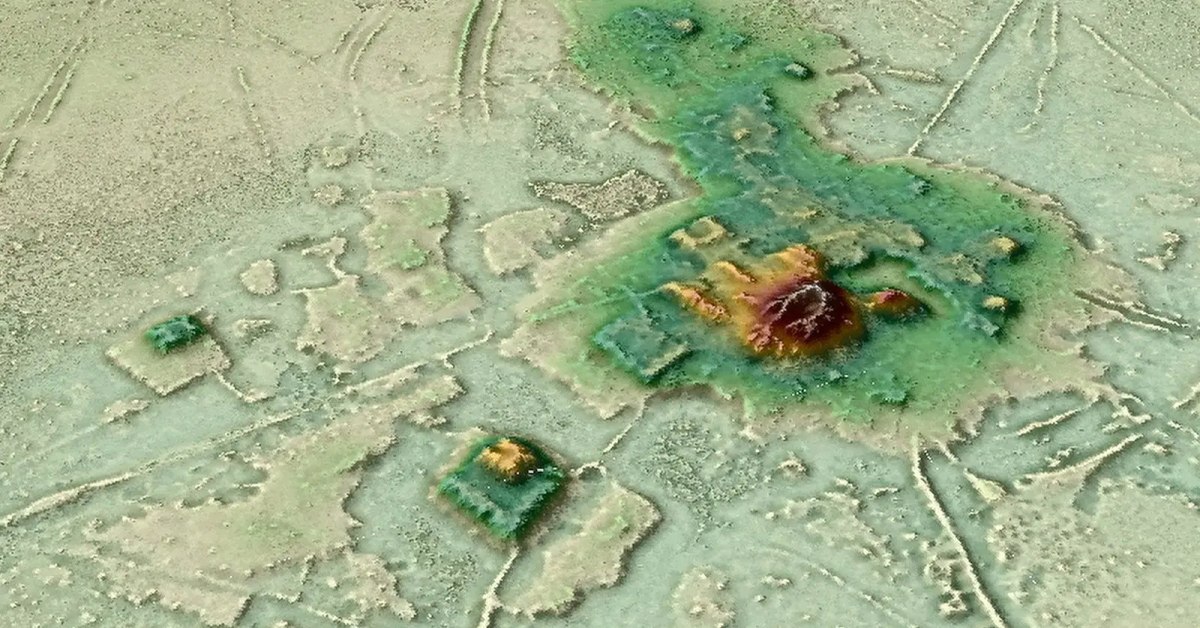Enormous cities – the tracks of a lost culture – have been found down in the deep of the Amazonian jungle.

Amazonia has long been thought to have always existed as an untouched paradise, where the jungle was too wild and dense to support large-scale human settlements in pre-Columbian times. Still, there were some legends circulating about Eldorado, stretching deep in the primeval forest and promising plenty of gold. But the Spanish explorers who went in search of the place never returned, and neither did an Englishman called Percy Fawcett, who last ventured into the jungle at the beginning of the early 20th century during an expedition to find “Z” – his name for an ancient lost city which he and others believed existed in the jungles of Brazil (as you may know from James Gray’s excellent 2016 movie, The Lost City of Z).
Now, after all those centuries of searching, jungle-penetrating lasers called lidar (Light Detection and Ranging) have peeked through the dense Amazonian rainforest with a much better chance of finding lost civilizations. Beside instantaneously scanning huge areas, the technology also allows researchers to see through thick vegetation and pick up on hints of human-made structures that have since been lost to time. In this way, the ruins of 11 previously unknown settlements decorated with vast pyramids and extended waterways have just been discovered.
As reported in the journal Nature, researchers at the German Institute of Archeology, the University of Bonn and the University of Exeter took lidar surveys of structures deep in the dense vegetation of the northern Bolivian Amazon from a height of 200 meters and locating the urban centers of the Casarabe culture thriving between AD 500-1400.
The scientists examined six areas within a 4,500 square kilometer (1,737 square mile) region of the Llanos de Mojos in the Bolivian Amazon, discovering two new large settlement sites named Cotoca and Landívar, and 24 smaller sites – of which only 15 were previously known to exist.
The settlements didn’t merely consist of a few scattered huts; apparently, some of them were bustling communities that had monumental architectural solutions used for ceremonies, but also kilometers of dams connecting the suburbs, huge water regulation and distribution systems, reservoirs and canals. Among these larger settlements of Cotoca and Landívar, the team even discovered vast platform mounds and cone-shaped pyramids measuring up to 22 meters (72 feet) tall. All this suggests that Amazonia had densely populated, urbanized societies before the arrival of the European conquerors.

“Our results put to rest arguments that western Amazonia was sparsely populated in pre-Hispanic times,” the study authors write.
“As with other tropical regions, the application of archaeological Lidar to the Amazon has launched a transformative process of discovery, documentation and reworking of assumptions held for decades regarding the nature of ancient societies,” Chris Fisher, an archaeologist and professor of anthropology at Colorado State University, not directly involved with the study, wrote in an accompanying article.
“[This] work is the opening salvo of an Amazonian new orthodoxy that challenges the current understanding of Amazonian prehistory and fundamentally enriches our knowledge of tropical civilizations.”
Undoubtedly, the Amazon still hides a lot discover, but time is a key element here. Threatened by the climate crisis and rampant deforestation, it may be just too late for us to find them.
“Unfortunately, given the rapid rate of ecological change that threatens not only ecosystems but also cultural resources, we are running out of time,” Fisher concluded. “If the Amazonian new orthodoxy is to be suitably documented before the archaeology vanishes forever, we must see many more large-scale lidar scans and studies like the one presented by Prümers and colleagues.”
Sources: 1, 2, 3
